Senior Analyst II
20+ Senior Analyst II Interview Questions and Answers

Asked in Paperchase Accountancy

Q. 1. What you will check in BRS ? 2. Possible causes of difference in balance in our books and our receivable books ?
In BRS, check bank statement against company records. Possible causes of balance difference: timing issues, errors, bank fees.
Compare bank statement with company records
Check for timing issues, such as outstanding checks or deposits in transit
Look for errors in recording transactions
Consider bank fees or charges that may affect the balance

Asked in India Ratings & Research

Q. What is your approach to rating an NBFC that has a manufacturing parent company?
The approach to rating an NBFC with a manufacturing parent involves analyzing the parent's financial strength and the NBFC's business model.
Assess the parent company's creditworthiness and financial stability
Evaluate the NBFC's business model and its relationship with the parent company
Analyze the NBFC's risk management practices and regulatory compliance
Consider the industry and market conditions in which the NBFC operates
Look at the NBFC's financial performance and projecti...read more
Senior Analyst II Interview Questions and Answers for Freshers

Asked in Accenture

Q. 1.How you identify rank for a serious of students,write a query
Ranking students based on their performance using a query
Use the RANK() function in SQL to assign a rank to each student based on their performance
Order the students by their performance metric (e.g. grades) in descending order
Handle ties by using the DENSE_RANK() function instead of RANK()
Consider using the ROW_NUMBER() function if you want to assign unique ranks without handling ties

Asked in HCLTech

Q. What is vpn and how to implement it?
VPN stands for Virtual Private Network, a secure connection that allows users to access the internet privately and securely.
VPN creates a secure encrypted connection over a less secure network, such as the internet.
It masks your IP address and encrypts data to ensure privacy and security.
VPN can be implemented using VPN software or apps, configuring VPN settings on devices, or using VPN routers.
Examples of VPN services include NordVPN, ExpressVPN, and CyberGhost.

Asked in HSBC Group

Q. Mathematics behind random forest, logistic regression?
Random forest is an ensemble learning method that builds multiple decision trees and combines their predictions. Logistic regression is a statistical model used to predict the probability of a binary outcome.
Random forest combines multiple decision trees to improve accuracy and reduce overfitting.
Logistic regression is used to model the probability of a binary outcome based on one or more predictor variables.
Random forest is a non-linear model while logistic regression is a l...read more

Asked in HCLTech

Q. What is ipsec?and how to implement it?
IPsec stands for Internet Protocol Security, a protocol suite used to secure Internet Protocol (IP) communications.
IPsec provides authentication, integrity, and confidentiality for data transmitted over a network.
It can be implemented through various protocols such as Authentication Header (AH) and Encapsulating Security Payload (ESP).
IPsec can be used to create Virtual Private Networks (VPNs) for secure communication over public networks.
Implementation involves configuring s...read more
Senior Analyst II Jobs




Asked in FutureSoft India

Q. How is ownership drilldown performed?
Ownership drilldown is done by analyzing the ownership structure of a company to identify major shareholders and their respective stakes.
Start by obtaining the company's latest shareholder list
Identify major shareholders and their percentage ownership
Drill down further to identify any parent companies or subsidiaries
Analyze the voting rights and influence of each major shareholder
Consider any institutional investors or mutual funds holding significant stakes
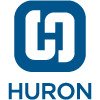
Asked in Huron

Q. What is RCM and what are the steps involved in RCM?
RCM stands for Reliability Centered Maintenance. It is a proactive maintenance strategy focused on ensuring equipment reliability.
Identify critical assets
Determine failure modes and effects
Develop maintenance strategies
Implement maintenance plans
Monitor effectiveness and adjust as needed
Share interview questions and help millions of jobseekers 🌟


Asked in Huron

Q. What steps are involved in RCM?
RCM involves multiple steps including patient registration, insurance verification, coding, billing, and collections.
Patient registration: Collecting patient information and insurance details.
Insurance verification: Confirming coverage and eligibility.
Coding: Assigning appropriate medical codes to diagnoses and procedures.
Billing: Generating and submitting claims to insurance companies.
Collections: Following up on unpaid claims and patient payments.

Asked in eClerx

Q. How do you use grep to display 10 lines before and after a pattern match?
Using grep to extract 10 lines before and after a pattern match
Use the -B and -A flags with grep to specify the number of lines before and after the match
Example: grep -B 10 -A 10 'pattern' file.txt
This will display 10 lines before and after the lines containing 'pattern' in file.txt

Asked in eClerx

Q. How would you find and delete files accessed in the last 365 days?
Identify and delete files accessed in the last 365 days.
Use a command line tool like find to search for files accessed within the last 365 days.
Once identified, use the rm command to delete the files.
Be cautious when deleting files to avoid removing important data.
Consider creating a backup of the files before deletion.

Asked in Paytm

Q. Explain the assumptions of linear regression.
Assumptions of linear regression include linearity, independence, homoscedasticity, and normality.
Linearity: The relationship between the independent and dependent variables is linear.
Independence: The residuals are independent of each other.
Homoscedasticity: The variance of the residuals is constant across all levels of the independent variables.
Normality: The residuals are normally distributed.
Example: In a study examining the relationship between study hours and exam score...read more

Asked in HCLTech

Q. What is BIOS and how does it work?
BIOS stands for Basic Input/Output System. It is a firmware that initializes hardware components during the boot process.
BIOS is a firmware embedded on a small chip on the motherboard of a computer.
It is responsible for initializing and testing hardware components like the CPU, memory, and storage devices during the boot process.
BIOS also provides a basic set of instructions for the operating system to interact with the hardware.
It can be accessed and configured through a BIO...read more
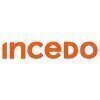
Asked in Incedo

Q. What is the derivative market?
Derivative market is a financial market where financial instruments derive their value from an underlying asset.
Derivatives are contracts between two parties that derive their value from an underlying asset such as stocks, bonds, commodities, currencies, or interest rates.
Common types of derivatives include futures, options, swaps, and forwards.
Derivative markets are used for hedging, speculation, and arbitrage.
Participants in derivative markets include institutional investor...read more

Asked in Yes Bank

Q. What is wealth management?
Wealth management involves financial planning, investment management, and other financial services to help individuals and families grow and protect their wealth.
Involves creating a personalized financial plan based on individual goals and risk tolerance
Includes investment management to grow wealth through various asset classes
Provides services such as retirement planning, tax planning, estate planning, and risk management
Often offered by financial advisors, wealth managers, ...read more
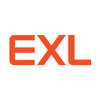
Asked in EXL Service

Q. What is the journal entry for Accounts Payable?
Journal entry for AP involves debiting accounts payable and crediting the corresponding expense or asset account.
Debit accounts payable to decrease the amount owed to suppliers
Credit the corresponding expense or asset account to reflect the payment made
Ensure the journal entry balances by debiting and crediting the same amount

Asked in VOIS

Q. What is a SOX audit?
SOX audit refers to Sarbanes-Oxley Act audit, which is a mandatory audit of internal controls over financial reporting.
SOX audit is required by the Sarbanes-Oxley Act of 2002 to ensure accuracy and reliability of financial statements.
It focuses on evaluating and testing the effectiveness of internal controls related to financial reporting.
SOX audit helps in preventing corporate fraud and ensuring transparency in financial operations.
Examples of SOX audit procedures include te...read more

Asked in FutureSoft India

Q. Explain the end-to-end KYC process.
The end to end KYC process involves verifying the identity of customers from onboarding to ongoing monitoring.
Customer onboarding: Collecting customer information and verifying identity documents.
Risk assessment: Evaluating the risk associated with the customer based on their profile.
Ongoing monitoring: Regularly updating customer information and conducting periodic reviews.
Compliance checks: Ensuring compliance with regulatory requirements throughout the process.

Asked in HCLTech

Q. What is a network?
A network is a collection of computers, servers, mainframes, network devices, and other devices connected to one another to share data and resources.
Networks can be classified based on their size (LAN, WAN, MAN)
They can be wired or wireless
Common network devices include routers, switches, and firewalls
Examples of networks include the internet, intranets, and extranets
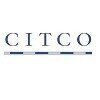
Asked in Citco

Q. What is a hedge fund?
A hedge fund is an investment fund that pools capital from accredited individuals or institutional investors and invests in a variety of assets.
Hedge funds are typically only accessible to high-net-worth individuals or institutional investors.
They often use leverage and derivatives to amplify returns.
Hedge funds can invest in a wide range of assets including stocks, bonds, commodities, and currencies.
They aim to generate high returns for their investors, often through active ...read more

Asked in DXC Technology

Q. OSI MODEL and their characteristics.
The OSI model is a conceptual framework that standardizes the functions of a telecommunication or computing system into seven layers.
The OSI model stands for Open Systems Interconnection model.
It consists of seven layers: Physical, Data Link, Network, Transport, Session, Presentation, and Application.
Each layer has specific functions and interacts with adjacent layers.
The model helps in understanding how data is transmitted over a network.
For example, the Physical layer deals...read more

Asked in India Ratings & Research

Q. Fundamental analysis of credit
Fundamental analysis of credit involves evaluating the financial health of a borrower to determine their creditworthiness.
Assessing the borrower's income, expenses, assets, and liabilities
Analyzing the borrower's credit history and credit score
Evaluating the borrower's ability to repay the loan
Examining the borrower's industry and market trends
Considering macroeconomic factors that may impact the borrower's ability to repay
Example: analyzing a company's financial statements t...read more

Asked in Huron

Q. What is an 837 claim form?
The 837 claim form is a standard electronic format used by healthcare providers to submit healthcare claims to payers.
Standard format for submitting healthcare claims electronically
Contains information such as patient demographics, provider information, diagnosis codes, procedure codes, and billing information
Used by healthcare providers to request payment for services rendered
Helps streamline the claims submission process and reduce errors
Ensures consistency and accuracy in ...read more
Asked in Infovoices

Q. Tell me about your strengths.
My strength lies in my analytical skills, enabling me to derive insights from complex data sets effectively.
Strong proficiency in data analysis tools like Excel and SQL, demonstrated by optimizing reporting processes in my previous role.
Ability to identify trends and patterns in data, which helped my team increase efficiency by 20% in project delivery.
Experience in presenting data-driven insights to stakeholders, leading to informed decision-making and strategic planning.

Asked in India Ratings & Research

Q. Risk drivers in NBFCs
Risk drivers in NBFCs
Lack of diversification in loan portfolio
Dependency on short-term funding sources
Inadequate risk management practices
Exposure to external factors such as economic downturns
Lack of regulatory oversight
Fraudulent activities by employees or borrowers
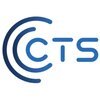
Asked in CTS Consulting & Technical Support

Q. Write a query.
Write a query to find the total sales amount for each product in the past month.
Use GROUP BY clause to group sales by product
Use SUM function to calculate total sales amount
Filter sales data for the past month using WHERE clause

Asked in TCS

Q. What are GAAP accounting standards?
GAAP accounting standards are a set of guidelines and rules used in the US to prepare and present financial statements.
GAAP stands for Generally Accepted Accounting Principles
GAAP ensures consistency and transparency in financial reporting
Examples of GAAP principles include revenue recognition, matching principle, and materiality

Asked in Incedo

Q. Type of Derivative
A derivative is a financial contract whose value is derived from the performance of an underlying asset, index, or rate.
Derivatives can be used for hedging, speculation, or arbitrage
Common types of derivatives include options, futures, forwards, and swaps
Options give the holder the right, but not the obligation, to buy or sell an asset at a specified price before a certain date
Futures are contracts to buy or sell an asset at a future date for a predetermined price
Forwards are...read more

Asked in Paytm

Q. Joins using Pandas.
Joins using Pandas involve merging two or more dataframes based on a common column or index.
Use pd.merge() function to join dataframes based on a common column.
Specify 'how' parameter to define the type of join (inner, outer, left, right).
Use 'on' parameter to specify the column to join on.
Example: pd.merge(df1, df2, how='inner', on='common_column')
Interview Experiences of Popular Companies






Calculate your in-hand salary
Confused about how your in-hand salary is calculated? Enter your annual salary (CTC) and get your in-hand salary


Reviews
Interviews
Salaries
Users










